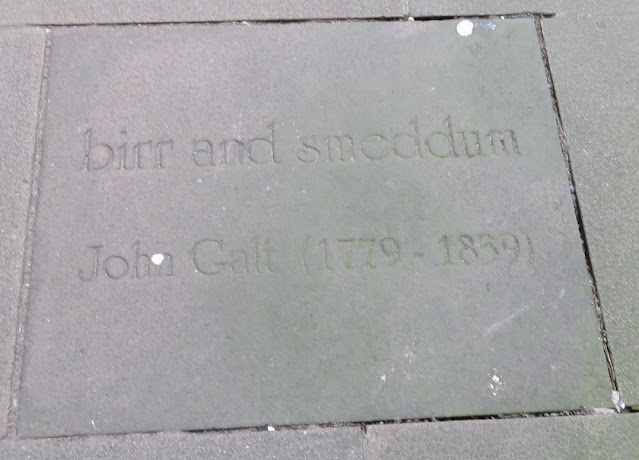Back in the 18th century, church ministers were chosen by
the local landowner. Of course not every
churchgoer was happy about that.
However, many congregations found ways of showing their disapproval when
the lord of the manor chose a minister who was not liked. Greenock was no exception.
 |
| Old West Kirk, Greenock |
In 1786 John Shaw Stewart, the patron, presented the Rev Allan McAulay to the
Presbytery as his chosen candidate for the vacancy at the Old West Kirk. He was to be introduced to his new congregation on Sunday 19
May. The day was not without incident.
When the beadle went to open up the church, he
found that the doors had been barricaded shut and even the door into the pulpit
had been fastened with nails and then the heads of the nails cut off. The bell ropes had also been cut, so that the
bell could not be rung on that morning. Things were put right just in time for morning service. Enquiries were made into who could have done this, but no
culprits were found. Some of those
questioned stated that “those who had shut up the kirk were well warranted to do so
from the word of God”. It had obviously
been a popular move. Eventually, however, Rev McAulay was installed as the new minister.
 |
| List of Ministers, Old West Kirk, Greenock |
McAulay remained at Greenock for just three years, during which
time he complained about the state of the manse, a new one was eventually built
after he left. He also disagreed with the Dr Adam, minister of the Mid Parish regarding when communion should be celebrated in the town. He also caused some disquiet due to his “irregular marriage
… and other scandalous conduct". He was
suspended from his post while an investigation took place and died shortly
afterwards in 1791. (Source - "Old Greenock", George Williamson (1888).)
For two years prior to his death during his suspension, pulpit supply had been
provided by a number of different preachers.
Two months after McAulay’s death, much to their relief, the congregation
got a new Minister – the Rev Robert Steele who remained their minister for 40
years.
 |
| Rev Robert Steele's gravestone Old West Kirkyard |
A very similar scene is wonderfully described in the novel Annals of the Parish by John Galt, describing the introduction of the Rev Micah Balwhidder to his new parish in 1760:-
"First, of the placing – It was a great affair; for I was put
in by the patron, and the people knew nothing whatsoever of me, and their
hearts were stirred into strife on the occasion, and they did all that lay
within the compass of their power to keep me out, insomuch, that there was
obliged to be a guard of soldiers to protect the presbytery.”
He continues – “When we got to the kirk door, it was found
to be nailed up, so as by no possibility to be opened. The serjeant of the soldiers wanted to break
it, but I was afraid that the heritors would grudge and complain of the experience
of a new door, and I supplicated him to let it be as it was; we were, therefore
obligated to go in by a window, and the crowd followed us, in the most
unreverent manner, making the Lord’s house like an inn on a fair day, with
their grievous yelly-hooing”!
 |
| John Galt |
John Galt (1779-1839) moved to Greenock with his parents in 1789 and no doubt heard the story of McAulay’s welcome to the Old West Kirk. Annals of the Parish was one of Galt’s most
popular works and was published in 1821.



.JPG)
.JPG)

.JPG)

.JPG)


.JPG)







.JPG)
.JPG)
.JPG)
.JPG)
.JPG)




.JPG)









.JPG)

.JPG)
.JPG)
.JPG)
.JPG)
.JPG)
.JPG)
.JPG)
.JPG)



